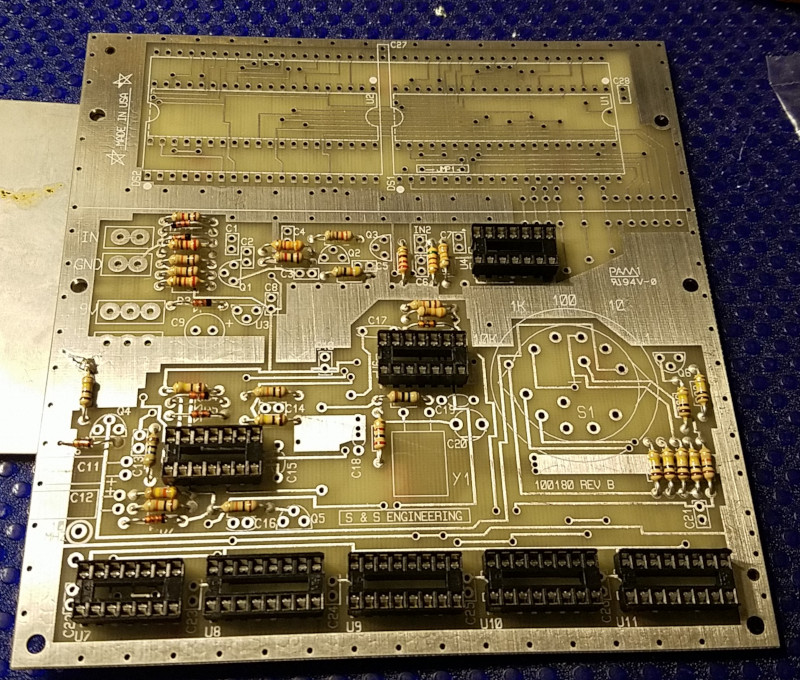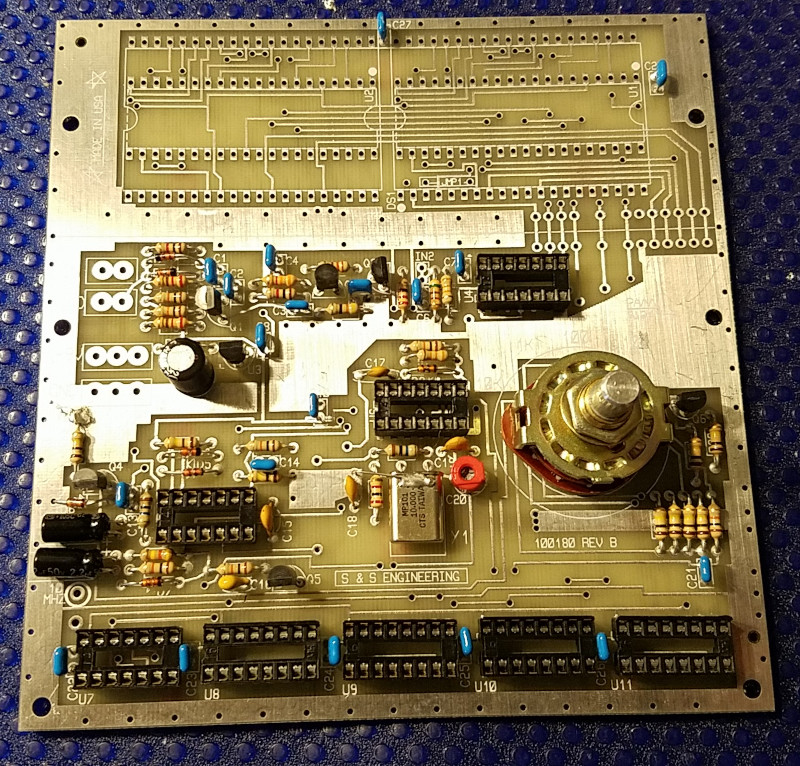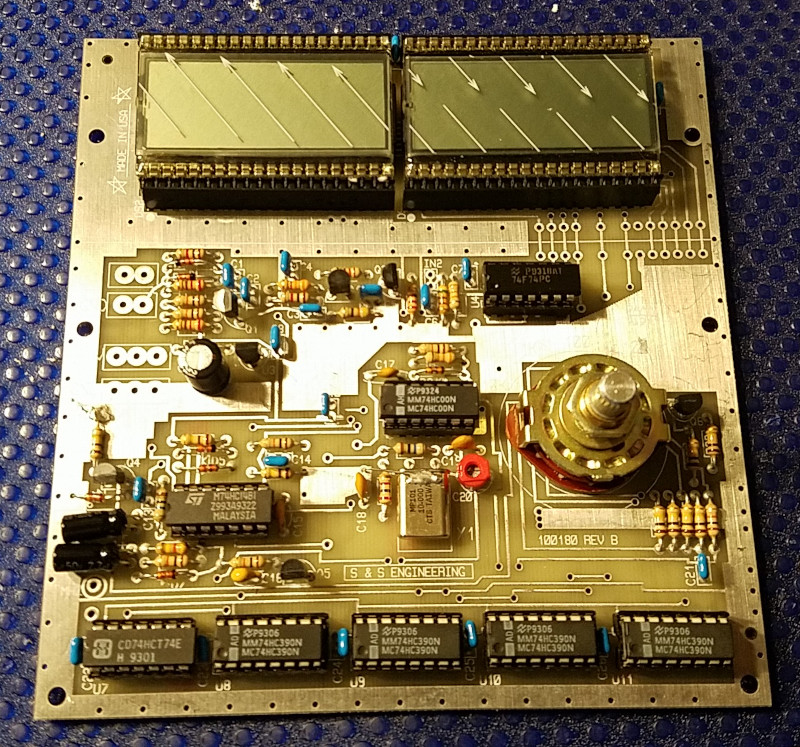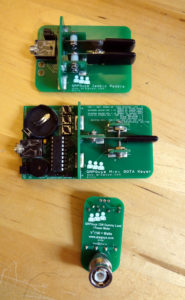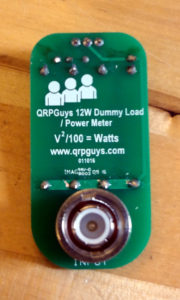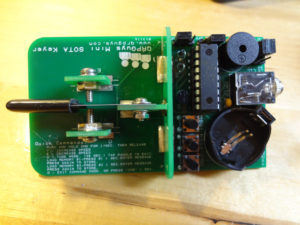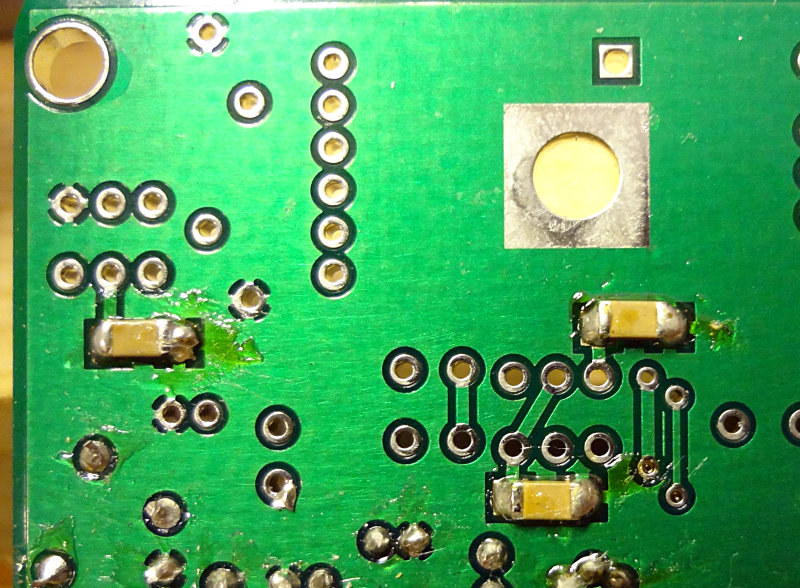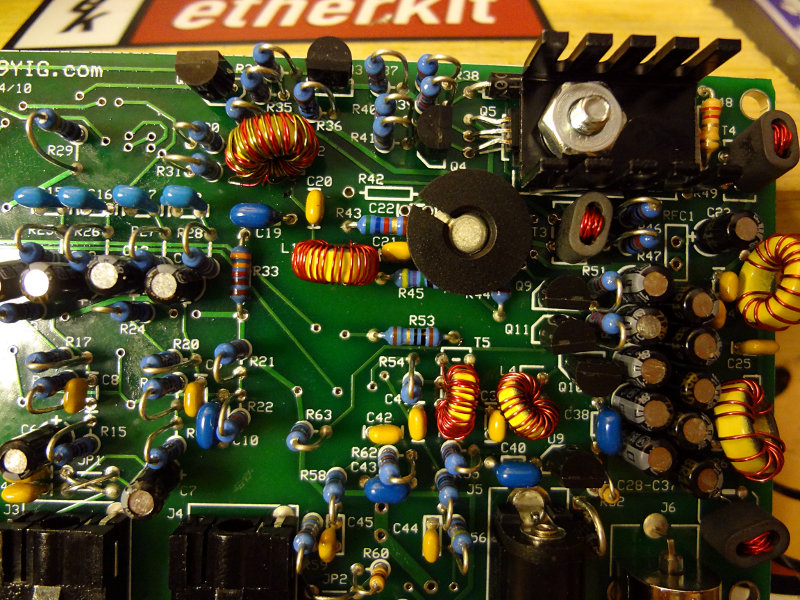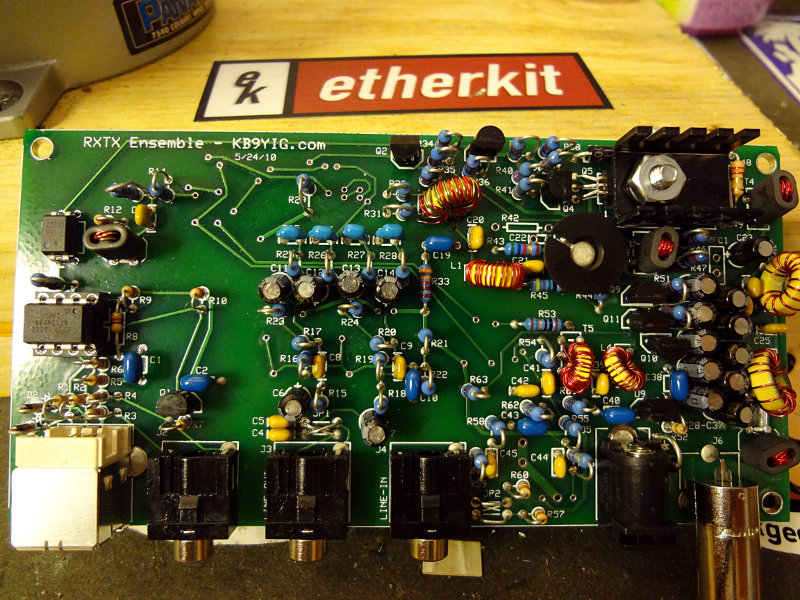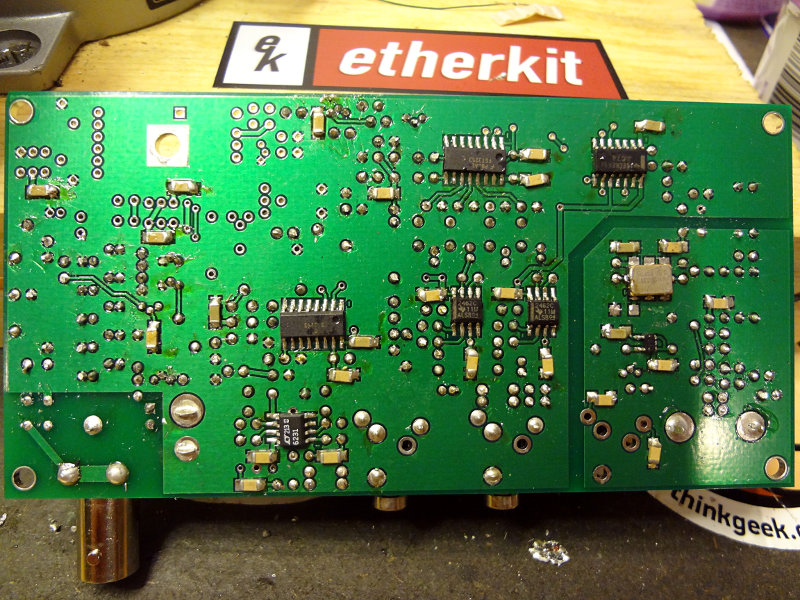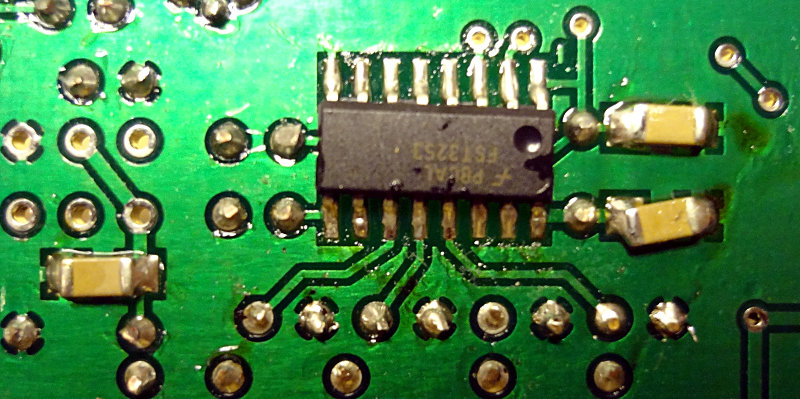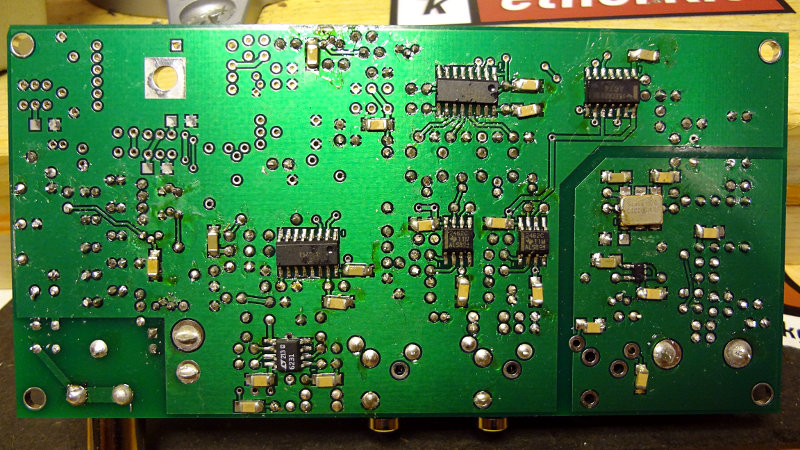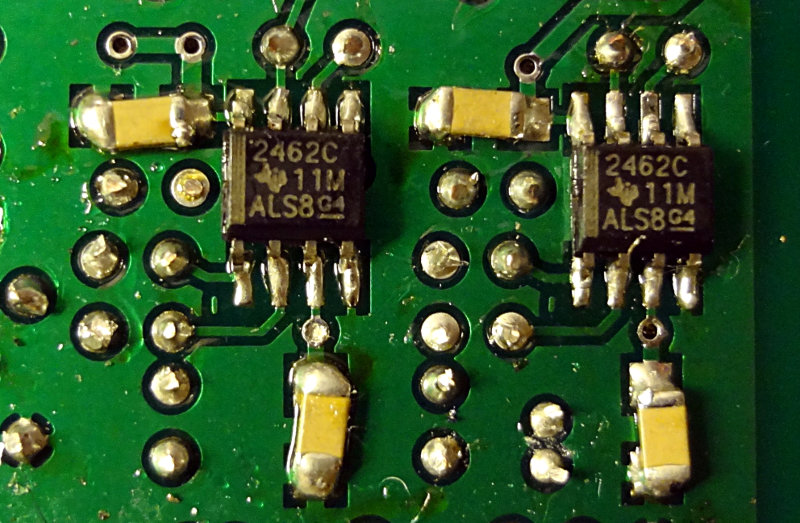One of the items from the KB1SH collection of parts I bought at Hamcation was an unassembled frequency counter kit. A packing slip still in the box showed it was purchased from a company called S&S Engineering out of Maryland in 1993. A quick search on Google didn’t yield anything that looked like it might have been related, so the S&S Engineering that produced this kit probably isn’t around anymore.
I love assembling and soldering a good kit, and this looked like a pretty good one. Documentation included the assembly instructions as well as a circuit schematic and a brief theory of operation section. This particular kit included an option for an additional 4 digit LCD display. All the necessary parts turned out to be there, except for a TO-92 voltage regulator that could very well be buried in my carpet somewhere. I neglected to get any photos of the boxed kit, but I did remember to take photos while I was soldering parts on.
The circuit board for the counter is relatively large, 13.1×13.5 cm and the part density wasn’t high so there’s plenty of room to work on the board while soldering things on. The printed circuit board itself is etched and tinned, but without a solder mask that you’d normally see. The only problem I ran into while soldering were two parts that went into a very large ground plane/heat sink. This would have been a good point to break out the flux and switch to a larger tip on the soldering iron had I thought about it.
There are a total of 10 ICs in the kit, which I decided to use sockets for. 8 of the sockets and all the resistors are installed in the photo above. The other two were for the 40 pin ICs used to support the LCD displays at the top of the board.
Above is the fully populated board, except for the two LCD driver ICs and the LCDs themselves.
The kit came with two 40 pin sockets, which the instructions say to cut apart and use for the LCD displays. I opted to use the sockets for the ICs, and some tall header sockets for the LCDs.
The fully assembled board looks pretty nice. Unfortunately, the frequency counter isn’t working yet. I’ve confirmed that the 10 MHz test point puts out something close to a 10 MHz signal, according to one of my DMMs. Not sure if I’ve put in something wrong, bad soldering, or if there’s just a problem with the LCD displays.

A few seemingly random LCD segments show up and then eventually fade after a few minutes. This makes me think it might be an issue with the LCD displays themselves. They are almost 30 years old (at least) after all. I’ll see if I can stick them into a breadboard or something and test them out. Wonder if it would be possible to wire in some other kind of display.
Figuring out how to get this frequency counter working will be as much fun as putting it together I think.
Update: Getting closer to figuring out the problem. Turned out I had the LCD driver ICs installed upside down. I wasn’t paying close enough attention to the installation instructions. With the ICs installed properly (glad I had them in sockets), now I can get the digits to display properly if I wiggle the LCDs in the header sockets to get them into a certain position. I might need to replace the header sockets with something else.
